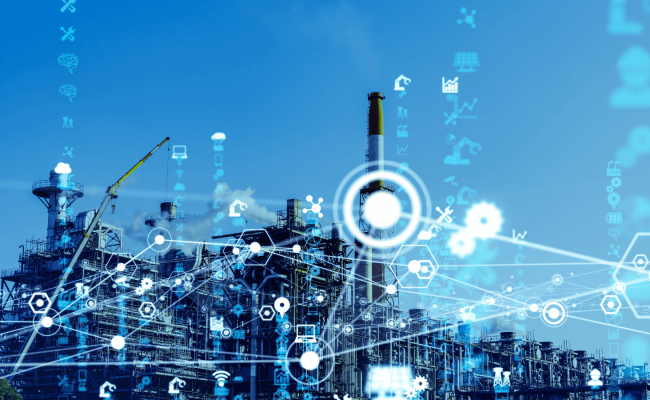Internet of things technology has had a positive impact on almost every aspect of human life. Now, we need its help more than ever as we struggle to overcome our biggest challenge to date – climate change.
This article will take an in-depth look at how the Internet of Things (IoT) can be used to reduce an organisation’s environmental impact through the integration of smart technologies.
What is the Internet of Things?
The Internet of Things (IoT) is a collective term used to describe a network of physical objects that are interconnected.
Through the employment of sensors and various types of software, these objects can communicate with other devices over the internet and exchange data.
In 2021, there were more than 10 billion IoT devices operating throughout the world, with this figure expected to exceed 25 billion by 2030.
How the Internet of Things is Helping Businesses Become More Sustainable
Large businesses are responsible for over 20% of the CO2 emissions in Ireland. They also have the greatest access to the world’s leading technologies.
There is a colossal opportunity to use these technologies for more than just increasing productivity.
Here are some of the ways the Internet of Things is helping businesses become more sustainable.
1. Energy Management
Energy Management is concerned with developing a process for continuously improving energy efficiency.
This process is powered by IoT smart devices collecting continuous data on a building’s energy usage and providing full visibility of said data.
By analysing this data, companies can then identify opportunities for energy optimisation. For instance, performing LED lighting upgrades or integrating renewable energy sources such as solar PV.
IoT-powered smart devices allow companies to remotely manage and monitor their mechanical and electrical facilities.
Additionally, having a network of connected systems enables organisations to control their energy distribution and even reroute energy during outages.
It is reported that 83% of businesses in the industrial sector have increased their energy efficiency via the implementation of IoT technologies.
2. Smart Lighting
We mentioned in the previous point how upgrading to energy-efficient LED lighting can be a powerful opportunity for energy optimisation.
Further expanding on this lighting type’s scope for energy savings is its integration with IoT technology.
Through the use of sensors and smart bulbs, users can control the lighting levels in their home or office using remote devices such as a smartphone or a smart energy management device.
A linked lighting system’s data collection provides information on how to scale back Co2 emissions and expenses.
You can also cut back on lighting and other services when they are not needed by utilising daylight harvesting and occupancy detection.
3. Water Monitoring
Water scarcity is currently said to impact 30% of Europe’s population. This figure could become significantly larger with sustained and intense heatwaves becoming more common.
Businesses are a major drain on a country’s water supply. Additionally, in Ireland, the majority of companies have recently incurred a sharp increase in water charges.
Thus, there is both a conservation and a financial incentive to find ways to better manage water consumption.
The planning, development, distribution, and management of the use of water resources using a variety of IoT technologies is known as smart water management.
Connected monitoring systems can pinpoint where excessive consumption and waste are occurring, rectify usage patterns, and forecast future demand.
4. Air Quality Monitoring
IoT devices are also being used to monitor air quality.
Air pollution occurs when harmful chemicals like carbon monoxide are released into the air. It is a very serious issue, reportedly claiming 1,300 lives a year due to the negative impact it can have on respiratory and cardiovascular health.
Using sensors that detect changes in air quality, these smart systems assist companies in identifying problem areas for pollution. They can then use this data to take corrective action and limit any adverse effect their operations may be having on the environment.
Similarly, these IoT-powered sensors and monitoring devices can be used to track the health status of an indoor environment’s air.
By monitoring and providing regular updates on the levels of different pollutants such as Co2 present in your offices, these technologies can help you to protect the health and wellbeing of your workforce.
Lawler Vision and the Internet of Things
Lawler Vision is a digitised tool that assists businesses and organisations to reduce carbon emissions and energy and maintenance costs. It is essentially a one-stop-shop solution for managing energy usage, costs, and Co2 emissions.
Lawler Vision is unique in its groundbreaking Internet of Things use cases. Take a look at how we were able to incorporate the Lawler Vision platform with Vicki TRV heating control systems here.
Together with our sister company, Lawler Consulting, Our mission at Lawler Sustainability is to make our buildings more energy-efficient, cost-effective to operate, and sustainable. If you are interested in our energy reduction solutions, please contact us here.
Follow us on LinkedIn to keep up to date with all of our latest developments and industry trends.

